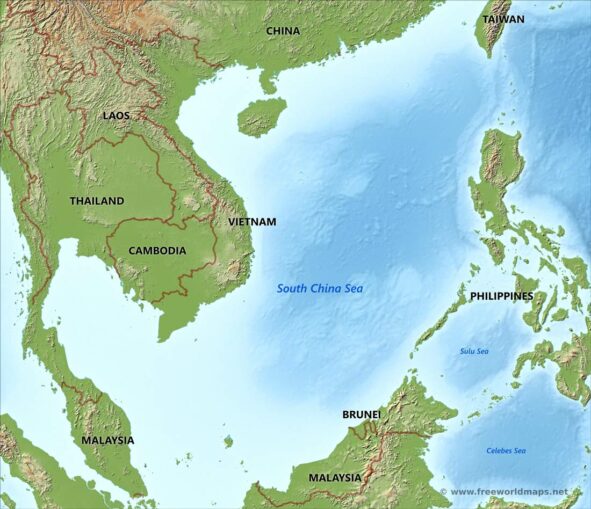U.S. B-52 provokes near clash with China: Three headlines
‘Chinese jet fighter harasses U.S. bomber in South China Sea’
This was the headline my lunch partner found on a CNN article Oct. 27. “I know you like puzzles,” she said to me as we sat down to eat. “What is wrong with that headline?”

The U.S. Air Force is flying B-52 bombers over waters close to the Chinese mainland.
I smiled. The South China Sea is twice as big as the Gulf of Mexico, but I could assume this confrontation had taken place in its northern half and imagined how Washington would react if a Chinese bomber flew even at the southernmost end of the Gulf.
Before I could answer, she added, “Because when I looked at the report an hour later CNN had changed the headline.” The headline now read:
‘Chinese jet fighter harasses U.S. B-52 in South China Sea’
Was CNN being more precise, or did some editor think that by calling it a B-52, without spelling out that it was a bomber, they made it sound harmless?
The U.S. Air Force’s own site boasts of the superbomber’s qualities. I looked it up: “For more than 60 years, B-52s have been the backbone of the strategic bomber force for the United States.”
I continued, creating my own summary: “It was built first in 1952 and put into operation in 1954 to carry nuclear weapons and drop them on targets in the Soviet Union.”
“When we first saw the movie ‘Dr. Strangelove,’” she asked, referencing the 1964 film satirizing the danger of a nuclear confrontation, “and the cowboy patriot rode a nuclear bomb into Armageddon? Was that bomb hatch …?”
“Yes, that was a B-52,” I answered in response to her incomplete question. For the two of us, these bombers were indelibly associated with the annihilation of humanity.
We also knew and hated the B-52s from the U.S. war against Vietnam. Neither of us needed to speak about their unspeakable deployment in Vietnam, Cambodia and Laos, the incessant carpet bombing of villages and towns with napalm and heavy ordnance, more than was dropped in all of World War II. These bombs burned Vietnamese people in their homes.
The Air Force site stated that of the 744 B-52s built, the 58 still in operation are all of the latest version, the B-52H, which can carry 20 air-launched cruise missiles. They fly at 650 mph and have a range of 8,800 miles.
They were used in 1991 against Iraq and again during the 2003-2011 occupation carried out against the Iraqi people, and then later in Syria, making tens of thousands more victims.
“For anyone familiar with the B-52,” I said, “I guess they don’t need to add the word ‘bomber.’”
A more precise statement arrived from the Pentagon before that evening. CNN reported it and again changed the headline:
‘Chinese fighter jet got within 10 feet of U.S. bomber over South China Sea, U.S. military says’
“This headline puzzle grows more complex each hour,” my now dinner partner said as she read me the headline. “How would you explain this?”
I thought it over. They had given up at making the B-52 look harmless. It was now an attempt to distract us.
“We are supposed to focus on what they claim is the ‘unsafe and unprofessional behavior’ of the Chinese pilot, and away from the obvious provocative behavior of the U.S. B-52H bomber that threatens World War III,” I said.
“None of the articles say how close the bomber was to the Chinese mainland coast,” she said, “although the Pentagon said the U.S. had the right to fly anywhere in international airspace.”
“That means within 12 miles off the coast,” I said. “Even if it were 50 miles away from the coast it would take less than six minutes to be over the land. At 650 miles per hour, it would travel 65 miles in six minutes. A B-52H could never be mistaken for a weather balloon, like the big Chinese balloon that drifted across the U.S. last winter.”
“Yes,” she said. “Senator Chuck Schumer called that a ‘brazen incursion,’ although later every expert agreed it had to be an accident. The politicians ranted about it for a few days before a U.S. jet fighter shot it down as it was about to leave U.S. airspace.”
“Now’s your turn to answer a puzzle,” I said. “Which military is the warmonger?”

